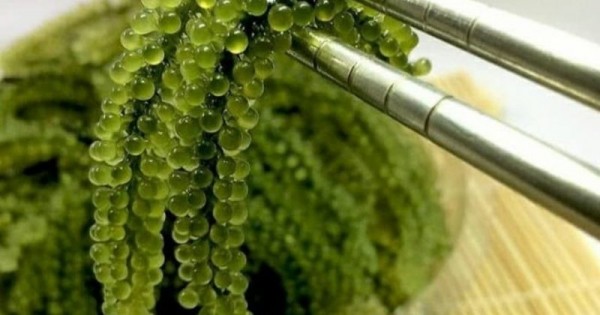Seagrape (Caulerpa racemosa) or latoh (Indonesian designation), umi budo (the term in Japan) is one of 500 species of seaweed in Indonesia that is currently not widely commercialized and cultivated. Many coastal communities in Indonesia and Malaysia for salads. Along with the Indonesian government’s encouragement to increase the commercialization of marine research products included in the 2015-2045 RIRN (National Research Master Plan), researchers are competing to carry out fundamental and applied research to reveal marine commodities’ potential in Indonesia, including seaweed.
This seaweed contains a high enough protein that reaches 21% with a high residual amino acid aspartate and glutamic acid, including umami or savory flavor producers. Besides, this seaweed also has a distinctive seafood aroma. Therefore, this seaweed should compete with other seaweed products that are already commercial in Japan, such as wakame and nori.
With the natural wealth in the Indonesian oceans, several seafood-based derivative / processed products compete in the seafood market both in Indonesia and globally, including surimi, meatballs, sausages, canned fish, crackers, and sauces. By looking at sea grapes’ characteristics, one of the derivative products that can be applied is a sauce, namely by utilizing the protein, amino acids, and compounds in the form of seafood’s aroma.
In Amin’s research (2021), the process of making sauces from sea grapes begins by preparing dry sea grapes, which are dried using the method of air drying, then making sea grape protein hydrolyzates using the enzyme bromelain to release compounds that form the aroma of seafood, protein, and amino acids, then the formulation of making sauces by mixing hydrolyzates, palm sugar solution, carboxymethyl cellulose (CMC) gel, and glucose syrup. Furthermore, the cooking process is carried out and ends with cooling.
Brown seaweed sauce with a distinctive taste of seafood and palm sugar. Four compounds make up the aroma of seafood in the sauce, including nonanal, hexanal, and (E) -2-octenal, and octanoic acid). These compounds were previously detected in shrimp and squid products. Several compounds commonly contained in palm sugar, including nonanal, furfural, 5-hydroxymethylfurfural, n-hexadecanoic acid, and acetic acid, have also detected these compounds give aroma bready/fatty/waxy. They are also the result of the Maillard reaction. Thus, sauce from sea grapes in the study of Amin et al. (2021) has the right combination of seafood and bread flavors that make the sauce product accepted by consumers. The research is expected to provide useful information for fishery communities (researchers, society, government, business, and media) in Indonesia to carry out development and downstream activities in the future. (*)
Author: Muhamad Nur Ghoyatul Amin
The full article:
https://doi.org/10.1007/s10811-020-02366-z





